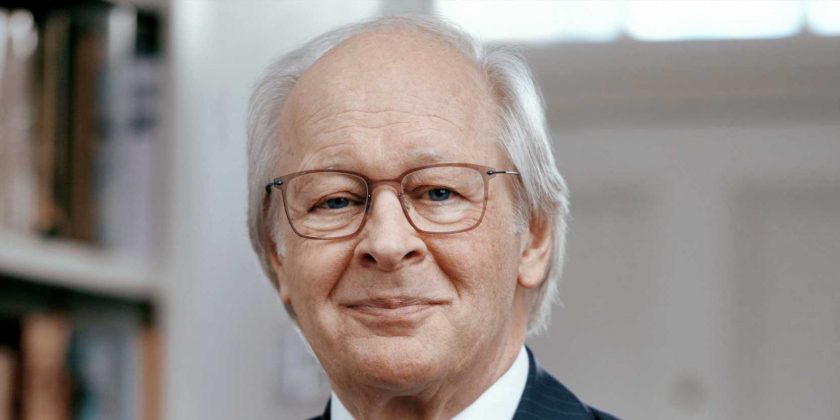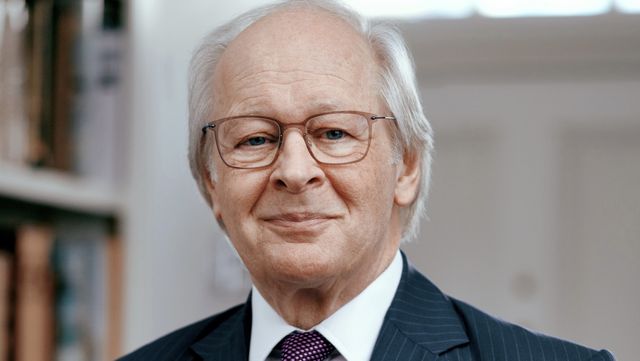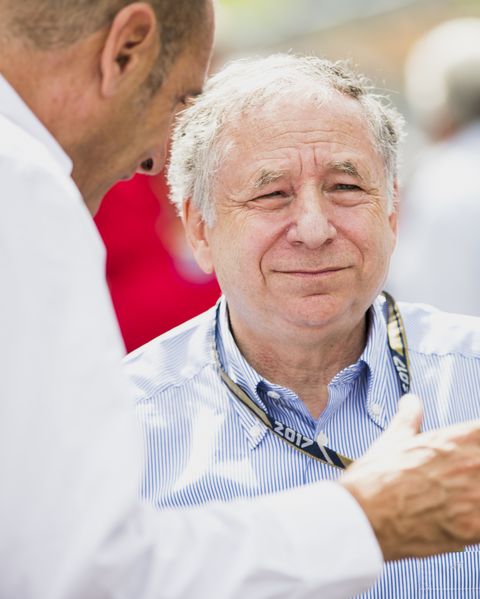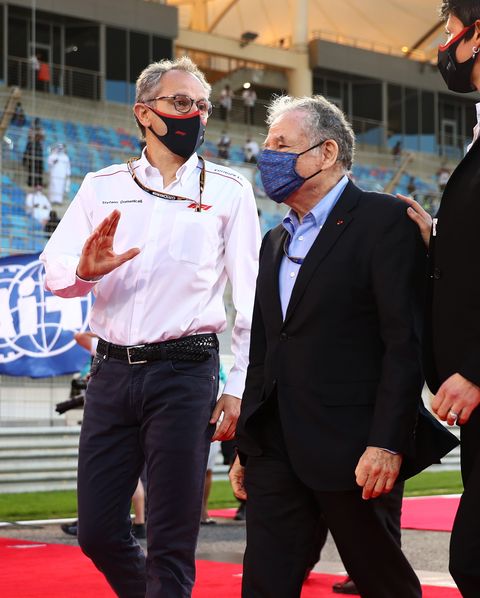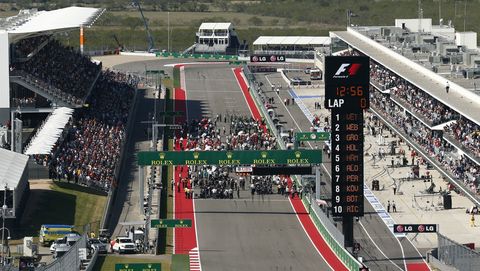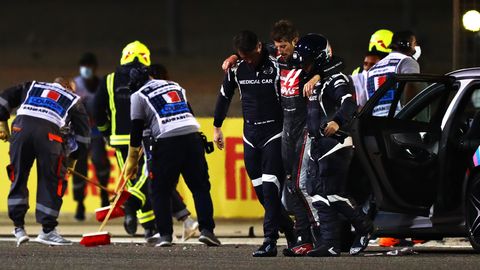As FIA Deputy President for Sport and a member of the FIA World Motor Sport Council, Graham Stoker has witnessed the birth of Formula E, Extreme E and the W Series. He’s played a key role in an ever-changing automotive world that includes the growth of hybrid and electric power—many of the technologies evolving in the very shadow of a pandemic.
Stoker is also true car guy with what he calls “a weakness for Italian machinery.”
When it comes to his own cars and the favorites in his garage, he says, “I’m also a bit of an old Miami Vice fan. My favorite—and it’s unusual to get four seats in the Cabrolet—but I’ve got a (Ferrari) Mondial Cabriolet with “In the Air Tonight” on the CD. That’s my good fun. “
The one that got away is a Ferrari Dino 246 that he regrets selling.
In December, Stoker hopes to become the International Automobile Federation’s
next president. He’s emerged as one of two candidates angling to replace three-term president Jean Todt, who is coming to the end of his FIA-mandated three-term limit as head of the governing body. Stoker and FIA vice president Mohammed ben Sulayem face off in an election that will determine the FIA’s next leader and the direction of that very office.
“We’re the International Governing Body of Motorsport,” Stoker told Autoweek when asked to describe the role of FIA’s top boss. “We operate in 147 countries. We have 240 or so organizations who are our members. In the U.S., for instance, it is our friends ACCUS (Automobile Competition Committee For the United States FIA Inc.)—the very well-known federation in the States who do a great job.
“We’ve also got a mobility arm. We represent the car drivers around the world. When you look at that membership number is probably pushing 80 million. The FIA president, of course, represents and leads that organization. It’s a heavy job, important job, vital job.”
Stoker knows the next president will be facing unprecedented challenges of operating in a racing and political climate all with the cloud of the pandemic still hovering over much of the world.
“I’ve been deputy president for sport for the last 12 years,” Stoker says. “I don’t underestimate the challenges of coming out of this pandemic. I want to steer with a steady hand on the tiller. But then we’re facing a whole lot of challenges, and I want to convert them into opportunities and come up with fresh ideas.
“So, it’s a bit of both really, in truth. We’re all talking about what engine should be in our car. FIA should be in there, helping people understand. That should be a role.”
The next FIA boss will also face a balancing act in sport between maintaining the on-track show while at the same time addressing environmental and climate pressures facing the industry. The global move toward alternative forms of energy puts racing in the perfect petri dish.
“We’ve got a fabulous story about solutions to this issue,” Stoker said. “It’s not just EVs. If you look at the hybrids, they’ve all been driven, I think, probably by the sports car world and endurance racing. The current Formula 1 engine is over 50 percent efficient. We’re trying to move toward running that on totally sustainable e-fuels.
“I’m excited. We can even start capturing carbon from the atmosphere—so when you start an engine up, you actually help climate change. And then we’ve got the whole issue of hydrogen. We’ve got so many options across our sport. I think we should be the showcase, workbench, laboratory, call it what you will, of how to do things efficiently. And that’s really what our sport has always been about.”
In terms of Formula 1, Stoker sees the role of FIA president as a key part of leadership group that today includes U.S.-based stakeholder Liberty Media. No longer is F1 run by one man, as was the perception of many during the Bernie Ecclestone era.
“It’s a partnership,” Stoker says. “Liberty and the Formula 1 organization are the commercial rights holder and they promote the events. They do a fabulous job around the world promoting the events. We organize the events.
“We provide stewards, technical scrutineering, the safety teams—we organize that in partnership with our national federations when we touch down in a county. Then we’ve got the teams, obviously. We’ve got the drivers. Mix them all together and we’ve got the Formula 1 commission. We all work together. It’s not any one person calling the shots really. It’s a strong constructive partnership. If you do it that way, I think it works very well.”
Stoker sees a strong and growing partnership between FIA and the racing organizations in the United States. And that partnership is about so much more than just whether or not the U.S. gets a second (or even third) Formula 1 race or a return of the FIA World Rally Championship one day.
“In frank terms, the U.S. market is not only vital, but it’s so strong,” Stoker says. “You’ve got a great set of championships. I went to Indy a few years back, just fabulous the Indy 500. Also, I love your grassroots motorsports, all of your events and your clubs around the county. So, it’s a vital sector.
“In frank terms, the U.S. market is not only vital, but it’s so strong.”
“You understand sports cars. I want to see strong partnerships there with our sports car endurance championship (WEC). Formula 1 is there. I’m sure there are going to be more races. There’s a huge demand for that. And we’ve got top drivers in both IndyCar and Formula 1, and that’s very exciting.
“Looking at some of the other areas, you’ve made a big impact in cross country—look at the Baja with the trucks that are coming out of that and now running at Dakar. I think there’s a huge opportunity (in the U.S.) for rallies. Remember the old John Wayne westerns through the Old West? Imagine a special stage through that. I think it’s a big opportunity there. So, yes, you’re a key market, a key player, and we need a strong relationship.”
FIA and Formula 1 in particular face another challenge in the coming decade in the inevitable bidding war for future F1 races. The FIA and FOM seem intent on an annual calendar of no more than 25 races (the schedule is at 23 now). Yet, there are more countries and groups seeking to host races.
The FIA is careful not to get caught in the middle of this tug-o-war between new money, new events in places such as China, the Middle East and even the United States versus the traditional, historic, and often smaller European venues.
“The key is balance,” Stoker says. “You’ve got to have the kind of history and integrity of what’s going on in Formula 1, for example. And then you have the new events. And the new events come in and you have a right mix. And then you have a proper global championship, and I think that works very well.
“Then you’ve got the exciting new opportunities. Look at Baku from a few weeks ago and they’re driving around past historic buildings right down on the coast there. Then we go to another traditional French Grand Prix the next race, so we have traditional events as well. If you’ve got that mix, it works.”
Stoker adds that he sees the role of FIA president in part as a caretaker to all the good things that have come out of the organization. He ranks safety initiatives at the top of the list of accomplishments he’s seen in his 12 years as the FIA’s top deputy.
“You have to say safety right away,” Stoker says. “You can never stop. You’ve always got to work on that. I think the halo has worked very well, saved lives. But not only that, behind it we’ve got this in-depth approach to safety—accelerators in the helmet, high-speed cameras that watch what’s going on. You should read some of these reports we get from these. They’re just fabulous when we start to look into what’s happened with an incident and try to get into a stronger position. I think that’s great.
“Sustainability, I’ve mentioned. I think right across our championships, we demonstrate efficiencies in drive trains. We need to reach out to our great industry and encourage smart engineers to come in with solutions. I think that would be great.
“And the thing that really touched me, and I’ve been pushing hard on, is eSport development around the world, trying to make sure people can get into our sport, growing the grassroots, making sure our clubs are strong. So that’s really what we’ve been doing.”
As for a Day 1 goal as president, Stoker would like to see motorsport become more inclusive and accessible. He wants to change to equation that currently rates sponsorships as more important than talent for many participants.
“It’s accessibility,” Stoker says. “I want anyone to come into our sport, regardless of money, background, race, whatever. They should be able to come in and have a go. That requires a lot of work in grassroots, global sport development, eGaming—fabulous with the sim racing. If we start to do that, if we go around the country, around the world, we look for talent, we’re going to find new heroes.
“Think of Africa. Think of all the talent that never gets the chance to go racing or get in a rally car. We’ve got to address that. That will be my No. 1 task on my desk. You can be in the sport and then you can be an engineer. You can be a doctor. You can be a journalist. So many opportunities.
“We need to spread the word that there’s a place in our sport for everybody.”
Source: Read Full Article
